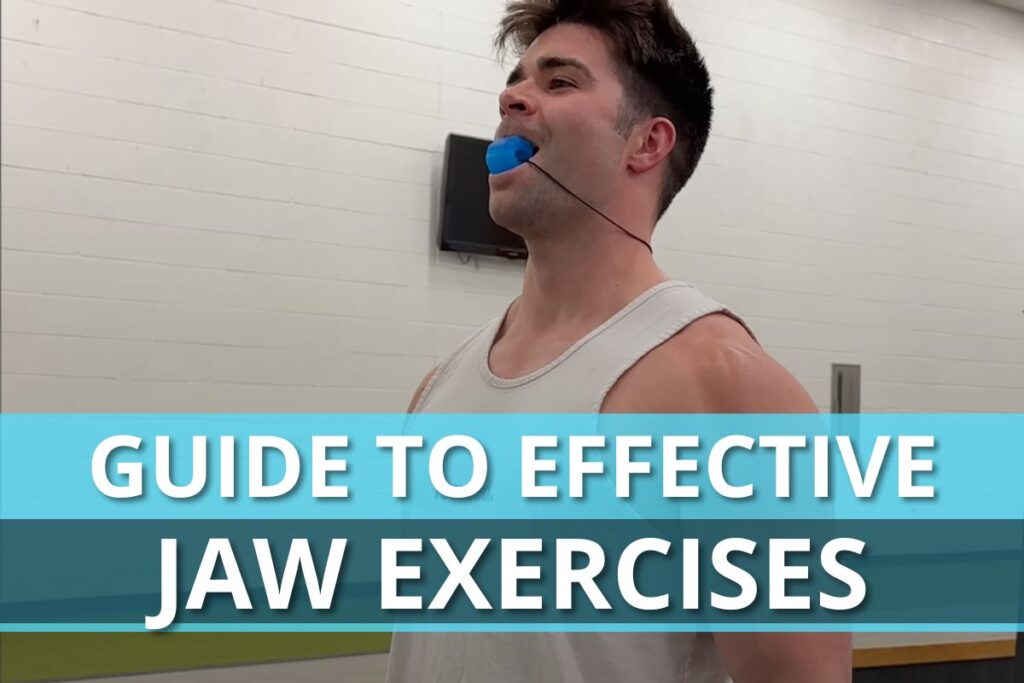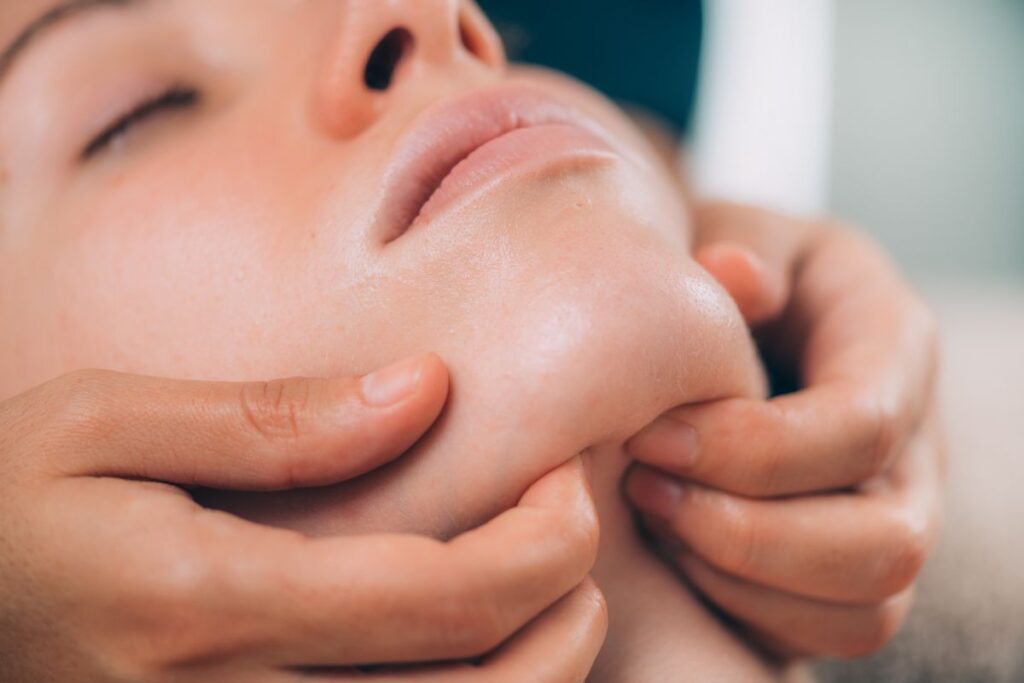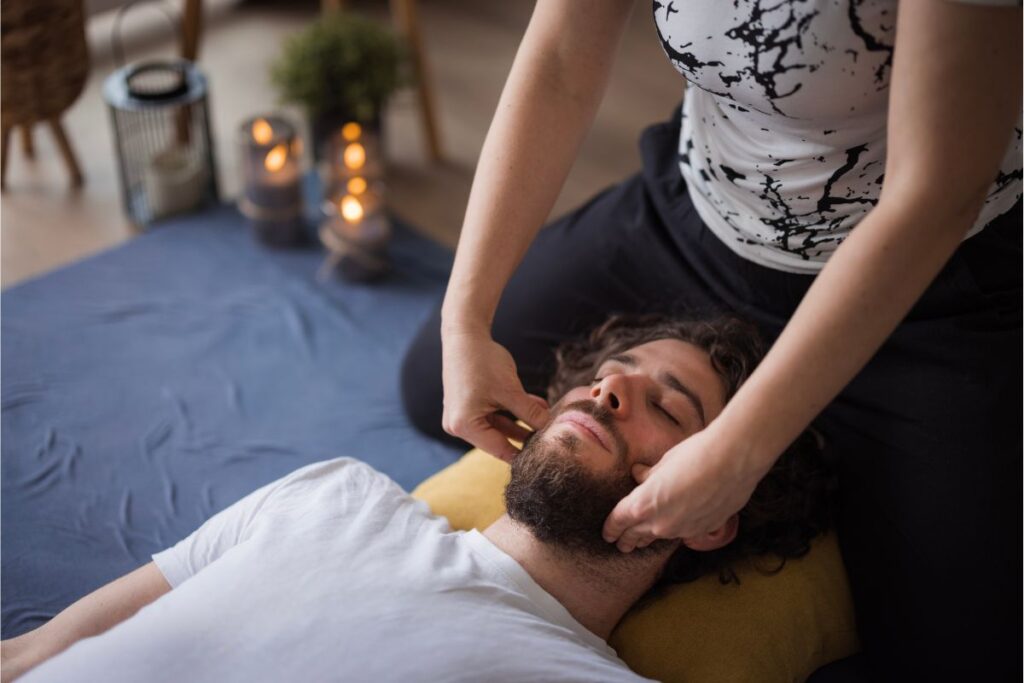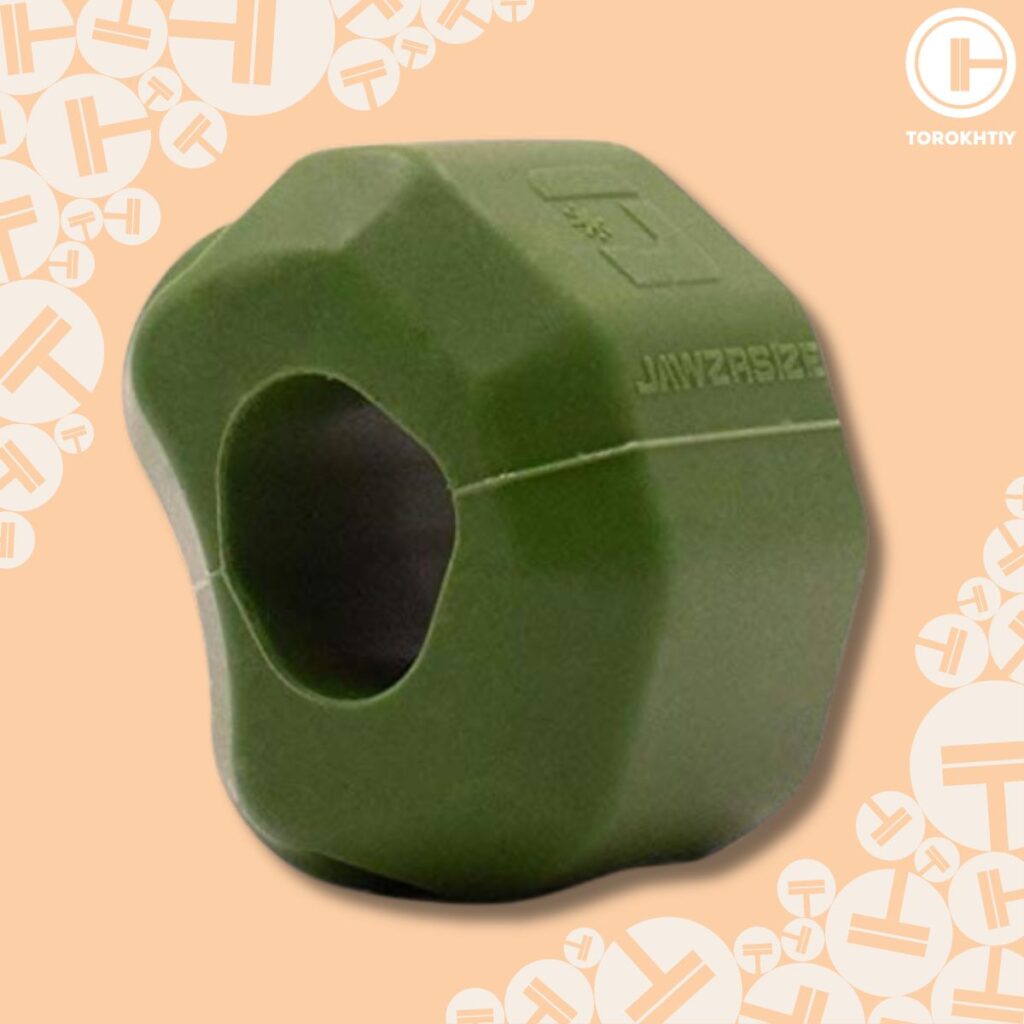8 Jaw Exercises For Jaw Strength And Alignment
Author:
Unlock your full potential by engaging with our experts and community! Have questions about your fitness journey or looking for expert advice on weightlifting techniques? Don’t hesitate — leave a comment below and Jason Li will provide a personalized answer and insights to help you reach your goals.
Torokhtiy is reader-supported. Some links are affiliate links, and we may earn a commission at no extra cost to you. See our disclosure page for details.
Jaw exercises might sound like a strange topic, but all muscles in your body deserve care and attention, and that includes your jaw. There’s a lot more to these exercises than just getting a chiseled jawline because they can help with aligning your jaw, reducing pain, and improving your oral health overall.
These exercises have a ton of benefits, and we’ll go through all of them. They can make an actual difference and improve the quality of your life. There is a catch, though – not all jaw exercises are the same and the key is finding the right routine for your needs. But don’t worry, we have you covered because we’re going to explore different exercises and you’re definitely going to find something that will work for you.
Let’s see how to get a better jawline!
What are jaw exercises? These exercises are targeted movements designed to make your jaw stronger, improve alignment, and reduce any discomfort you may be feeling.

6 Benefits of Jaw Exercises
There are not a lot of people who think paying attention to their jaw is important. If you’re one of them, then do yourself a favor and stick around for this section. By the time we’re done, you won’t be able to wait to start doing them, and you’ll be shocked at how easy it is to get a strong jawline.
✅ Less Stress
Believe it or not, it’s true – jawline exercises can help with stress. The jaw is closely connected to the temporomandibular joint (TMJ), which usually bears the brunt of stress and tension. If you do some jaw exercises, you’ll relax the muscles around the TMJ, alleviate stress, and reduce the chances of clenching or grinding your teeth, both of which are common ways of manifesting stress.
✅ Better Digestion
Good digestion starts with efficient chewing. Face muscle exercises (like gentle chewing motions) help with the production of saliva, which has enzymes that kickstart the digestive process. If you chew your food well, your stomach will have an easier time breaking it down, and that helps with absorbing nutrients. See? It’s all connected.
✅ Toned Face Muscles
If you work out, one of your goals is surely to tone the muscles in your body, so why should your jaw muscles be left out? Targeted face exercises will tighten and strengthen your muscles, which basically means that these exercises are a non-invasive (and free!) way to improve your facial features and get a more defined jawline.
✅ Less Jaw Pain and Tension Headaches
Exercising your jaw will help release the tension in the muscles around your jaw, which results in less discomfort and helps with pain. It also means that you’ll have less tension headaches because those are associated with jaw clenching.
✅ Preventing TMD
TMD (temporomandibular joint disorders) can be a consequence of a lot of factors, like stress, teeth grinding, and poor jaw alignment. Doing chin exercises on a regular basis can prevent TMD because your jaw muscles will become stronger and more flexible, so there’s less risk of joint dysfunction.
✅ Improved Jaw Mobility
These days, it’s hard to find a person that doesn’t lead a sedentary lifestyle because of the amount of office jobs. It is relatively well-known that a sedentary lifestyle causes issues, and one of them is reduced jaw mobility. Including a jaw workout into your daily routine will improve and maintain the range of motion in your jaw, prevent stiffness, and promote mobility in general.
Categories of Jaw Exercises
Oral health is more than just healthy gums and teeth, and as you’ve just seen, exercising your jaw has a lot of benefits. There’s been a lot of talk so far about jaw exercises, and it’s only fair to finally get into what they actually are and how to do them. These are the best jawline exercises you can do, so be sure to pay attention!
Basically, we have 4 types of jaw exercises: stretching, relaxation, mobility, and strength.
1. Stretching Exercises
Jaw muscles need to be flexible, and this is where stretching comes. Stretching will make your muscles more flexible, they will reduce stiffness, and improve range of motion.
• Jaw Opener
It sounds like the title of a horror movie, but the jaw opener is a very simple, effective exercise. You can sit or stand, just make sure you’re relaxed, and then slowly open your mouth as wide as you can while still being comfortable. You should feel a gentle stretch in your jaw muscles. Hold this for – seconds and then slowly close your mouth. Repeat this exercise 5-10 times.
• Side-to-Side Jaw Stretch
Start with your mouth closed and teeth gently together. Move your lower jaw slowly to one side and feel the stretch on the opposite side of your face. Hold the stretch for 5-10 seconds and then return to the center. Repeat on the other side. Do 5-10 repetitions on each side.
2. Relaxation Exercises
Your jaw muscles can be as tense as any other and the tension can result in developing some nasty habits, like teeth clenching or grinding. Relaxation exercises can be a big help because they contribute to an overall sense of calm and well-being.
• Jaw Massage
How can you properly relax without a massage? It’s one of the first things that comes to mind when you think of deep relaxation, so you should treat your jaw to a massage. Use your fingertips to gently massage your jaw muscles in circular motions.

Start close to your ears and move towards your chin. The pressure should be gentle, but not so gentle that you feel like you’re just stroking your face. Do this for 3 minutes and pay special attention to the parts that feel tense.
• Controlled Breathing
This one doesn’t include actively working your jaw, but you’ll still love it. All you need to do is to sit or lie down in a comfortable position, inhale deeply through your nose, and exhale slowly through your mouth. Repeat this for 5-10 minutes and try not to fall asleep.
3. Mobility Exercises
Their job is to improve the range of motion in your jaw joint, so mobility exercises are super useful to people who want to prevent or alleviate TMD.
• Resistance Opening
Place your thumb under your chin and try to open your mouth against the resistance of your thumb. Hold the resistance for 5 seconds, then release, and repeat this 5-10 times.
• Tongue to Roof of Mouth
It’s pretty obvious what you need to do here – close your mouth and touch the roof with your tongue. Hold for 5 seconds, then relax and repeat this 10-15 times. Usually, you’ll look a bit weird doing jaw exercises, but this is one you can do whenever and wherever because you don’t need to open your mouth and make strange faces.
4. Strengthening Exercises
Oral health, preventing fatigue, improved facial features, stronger muscles… You’ll get a sharper jawline along with all of this from strengthening exercises. They also do a good job of preventing fatigue.
• Jaw Resistance Exercise
You’ll need a resistance band for this one, and you’ll place the band around your chin. Once the band is in place, gently open and close your mouth against the resistance. Do 10-15 repetitions. This can also be a good exercise for sagging jowls.
• Chin Tucks
You can sit or stand, whatever feels more comfortable, but keep your spine straight either way. Gently tuck your chin towards your chest and feel that slight contraction in the jaw and neck muscles. Hold for 5 to 10 seconds, and then release. Repeat 10-12 times, and then you’re done!
Natural Jaw Exercise
If you don’t have the habit or the mental fortitude to commit to exercising your jaw and getting those cosmetic benefits (e.g., more defined jawline, enhanced facial features), or simply strengthening your jaw, there’s always the natural way of exercising your jaw.
And that is to significantly increase the number of chews that you do for each bite when eating. It sounds simple, and it really is. There is nothing extra to it, but simply increasing the regular (average) number of chewing motions that people do (which is around 10-15; but that number differs from person to person and based on the type of food that you eat).
Ideally, you’d want to double that number and chew each bite 20-30 times (again, on average). To better build the habit, try counting each chew cycle manualy. You’ll know if you feel strain and fatigue in your jaw after a whole meal.
This habit will not only benefit you in strengthening your jaw, but also help in food digestion, and even body weight management. The more you chew each bit, the better you break down the food. More chewed food helps your body absorb more nutrients more easily.
In regard to body weight management, that one’s simple. By chewing more, you’ll eat for a longer time, and more slowly. This extra time will help your body get satiated sooner, in turn, eating less than what you’d normally eat.
Precautions and Considerations
Exercising your jaw can be extremely helpful and it can improve the quality of your life, but as with anything, there are things to consider and precautions to take.
Generally, these exercises are designed to promote well-being, but you might experience some discomfort when you first start doing them, especially if you’re new to this. But not all discomfort is bad.
Think about lifting weights or running on a treadmill. You can experience pain, exhaustion, and just discomfort in general, but it’s important to differentiate between actual persisting pain and something that’s a result of exercising.
If you notice the discomfort lingering long after you’re done exercising or it becomes more intense, then you’ve probably pushed your limits too far and you should reconsider the intensity of the exercise you were doing.
Moderation is key with all exercises. If you do jaw exercises too often or too intensely, you can strain your muscles. Start slowly and allow your jaw muscles enough time to adapt before you up the intensity. Keep in mind that we all respond differently to jaw exercises because our anatomy and health conditions are different.

If you have an issue with your jaw, dental concerns, or you’ve had oral surgery recently, be careful with exercising.
Before you start, consult with your doctor, and have them advise you on an appropriate exercise routine. A professional will give you personalized recommendations based on your condition or concerns. This is especially important if you have a history of TMD or other issues related to the jaw.
If you work out, you know it can be difficult to include a training session in your day because everyone is so busy all the time. But jaw exercises are super easy in that regard because you should do them when your jaw is naturally relaxed, which is either after waking up or before going to bed.
And if we’re being completely honest, that’s probably the only time you would want to do them anyway because, as effective as they are, they require you to make some strange faces, and doing them in public or just around other people can be uncomfortable.
Jaw exercises are even more effective if you include some accessories, and we recommend the Pop ‘N Go. It’s made in the USA, uses patented technology, and promises to sculpt your jawline and improve the tone of your face and neck. It only takes 20 minutes a day and you should see some results pretty soon.
This is a powerful face flex facial exerciser, and it focuses mostly on enhancing the jawline – slimming, toning, and tightening. No more turkey neck! It improves the blood flow to the face, neck, and head, which contributes to a more muscular appearance. The resistance levels range from 20 to 300 pounds, so you can slowly increase the intensity as your muscles adapt.

The Pon ‘N Go is made of food-grade silicone and polyurethane. You can also customize it to fit better. First, place it in your mouth to get a feel of how wide you should open your mouth, and then place it (along with the biting strips) in boiling water for 20-24 seconds to make the material pliable.
Remove it from the water, let it cool a little, stick your thumbs through the hole and place the Pop ‘N Go in your mouth, adjusting it so that you are biting down on the bite strips. Hold for about 15 seconds and then run it under cold water.
This is an excellent product unless you have sensitive gums because it rubs against them during use.
Positives:
Could be better:
FAQ
Do Jaw Exercises Actually Work?
Yes, jaw exercises really work, and they can do wonders for your jaw strength, flexibility, and muscle tone. They can help with tension, stress, and reduce the risk of issues related to the jaw.
Are Jaw Exercises Good for Teeth?
Jaw training can be good for your teeth because it promotes healthy oral habits and reduces the risk of teeth grinding and clenching. If you strengthen your jaw muscles, your jaw will be aligned better, and you’ll be at less risk of TMJ disorders.
Conclusion
Working out isn’t just about your abs, glutes, legs, etc. Your jaw deserves some love too, and if you pay some attention to it, you’ll love the results! Just make sure to start slow and expect to make some really weird faces. They’re effective, but you’ll probably laugh at yourself a bit because, well… These are not your usual, everyday workouts. A lot of people wonder do jaw exercises work, and now you can tell them they do and show them how to do them.
So, how about it? Will you give jaw exercises a try, or at least the JAWZRSIZE Pop ‘N Go Jaw, Face, and Neck Exerciser? Did you know you could influence your facial features if you work on your jaw muscles?
Let’s start a conversation and help each other out! You can even do some jaw exercises while writing a comment.
Jaws out!
Also read:
References:
- Erik Lindfors, Tomas Magnusson, Malin Ernberg “Patients’ Experiences of Therapeutic Jaw Exercises in the Treatment of Masticatory Myofascial Pain – A Postal Questionnaire Study,” Journal of Oral Rehabilitation 46, no. 9 (2019): 800-806.
- Hiroyuki Ishiyama, Shusuke Inukai, Akira Nishiyama, Masayuki Hideshima, Shuhei Nakamura, Meiyo Tamaoka, Yasunari Miyazaki, Kenji Fueki, Noriyuki Wakabayashi “Effect of Jaw-Opening Exercise on Prevention of Temporomandibular Disorders Pain Associated with Oral Appliance Therapy in Obstructive Sleep Apnea Patients: A Randomized, Double-Blind, Placebo-Controlled Trial,” Journal of Prosthodontic Research 61, no. 3 (2017): 259-267.
- Jong-Chi Oh, Jae-Sung Kwon “Effects of Resistive Jaw-Opening Exercise with Elastic Bands on Suprahyoid Muscle Activation in Normal Subjects,” Folia Phoniatrica et Logopaedica 70, no. 3-4 (2018): 101-108.
- Jung Ha Park, Ji Hyun Moon, Hyeon Ju Kim, Mi Hee Kong, Yun Hwan Oh “Sedentary Lifestyle: Overview of Updated Evidence of Potential Health Risks,” Korean Journal of Family Medicine 41, no. 6 (2020): 365-373.
- Maria Beatriz D. Gavião, Lina Engelen, Andries van der Bilt, “Chewing Behavior and Salivary Secretion,” European Journal of Oral Sciences 112, no. 1 (2004): 19-24.
- Yong Zhu, Walter H. Hsu, James H. Hollis “Increased Number of Chews During a Fixed-Amount Meal Suppresses Postprandial Appetite and Modulates Glycemic Response in Older Males,” Physiological Behavior 133 (2014): 136-140.
- Hirokazu Ashiga, Eri Takei, Jin Magara, Ryosuke Takeishi, Takanori Tsujimura, Kouta Nagoya, Makoto Inoue “Effect of Attention on Chewing and Swallowing Behaviors in Healthy Humans,” Scientific Reports 9 (2019): 6013.
- Dongxiao Sun-Waterhouse, Wenyi Kang, Changyang Ma, Geoffrey I.N. Waterhouse “Towards Human Well-being Through Proper Chewing and Safe Swallowing: Multidisciplinary Empowerment of Food Design,” Journal of Future Foods, Volume 1, Issue 1, (September 2021): Pages 1-24.
- Yong Zhu, James H Hollis “Increasing the Number of Chews Before Swallowing Reduces Meal Size in Normal-Weight, Overweight, and Obese Adults,” Journal of the Academy of Nutrition and Dietetics, Volume 114, Issue 6 (June 2014): Pages 926-931.
- Photos by microgen: canva.com, Dobrila Vignjevic: canva.com
Why Trust Us?
With over 20 years in Olympic weightlifting, strength training, nutrition coaching, and general fitness our team does its best to provide the audience with ultimate support and meet the needs and requirements of advanced athletes and professional lifters, as well as people who strive to open new opportunities and develop their physical capabilities with us.
By trusting the recommendations of our certified experts in coaching, nutrition, and sports training programming, as well as scientific consultants, and physiotherapists, we provide you with thorough, well-considered, and scientifically proven content. All the information given in the articles concerning workout programming, separate exercises, and athletic performance, in general, is based on verified data.
The product testing process is described in more detail here.
Author: Jason Li
Personal Coach, Functional Range Conditioning Mobility Specialist
Jason is an NYC personal training expert and National level Olympic Weightlifting Coach with over 10 years of experience training everyday clients to high levels of performance. He has trained everyone from youth (13 years old and under) to masters (60+ years old) to regional and national rankings for powerlifting, Olympic Weightlifting, Short distance (up to 200m) sprinting, discus & hammer throwing.




Still have questions after reading our article? Unlock your full potential by engaging with our experts and community! Don’t hesitate — leave a comment below and Jason Li will provide a personalized answer and insights to help you reach your goals.